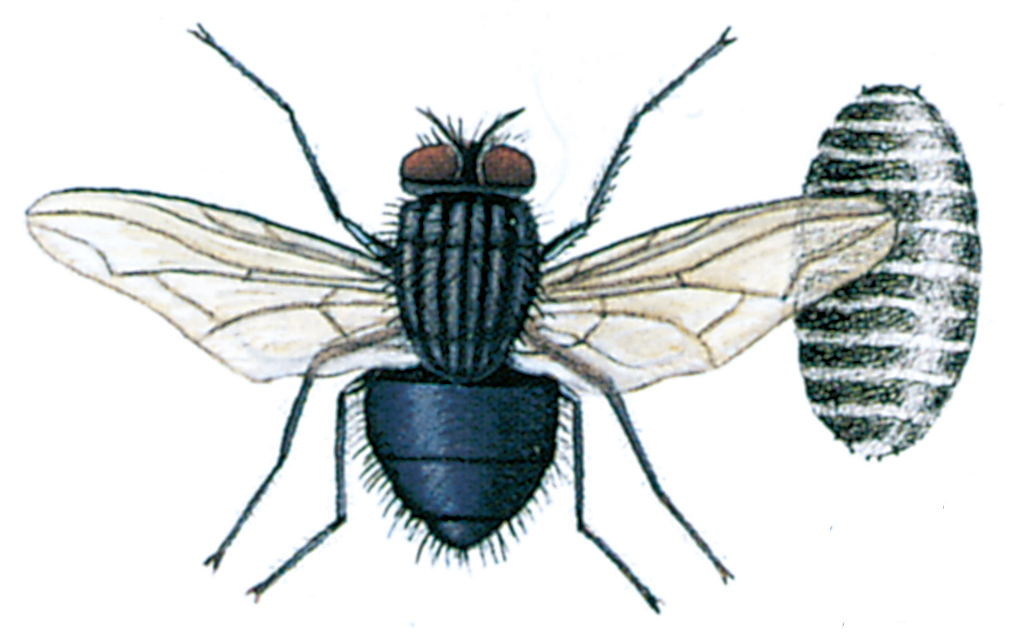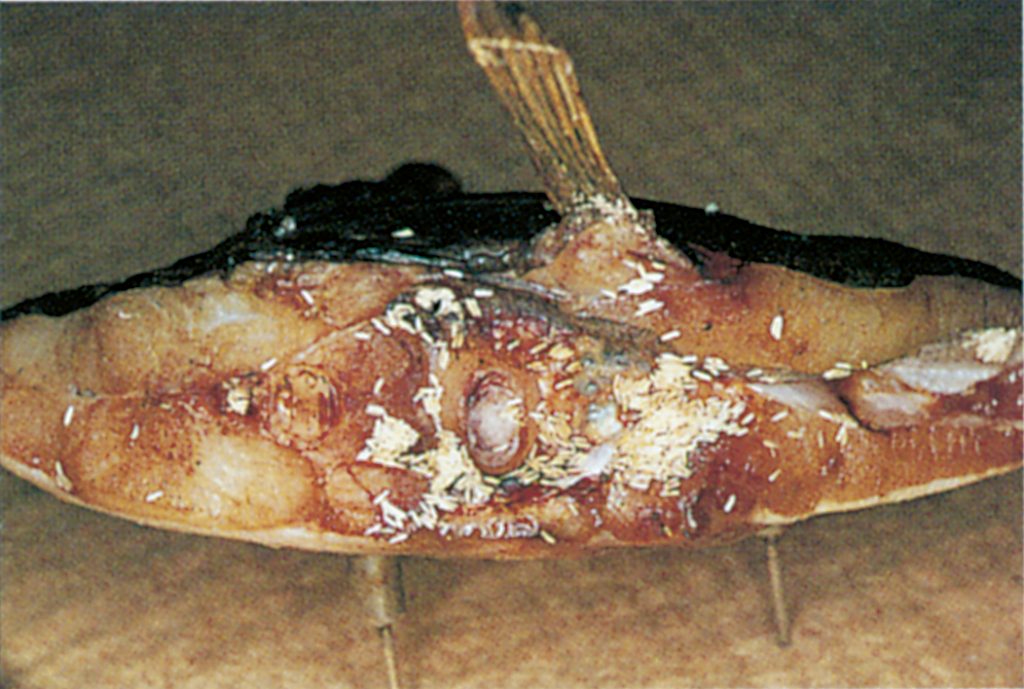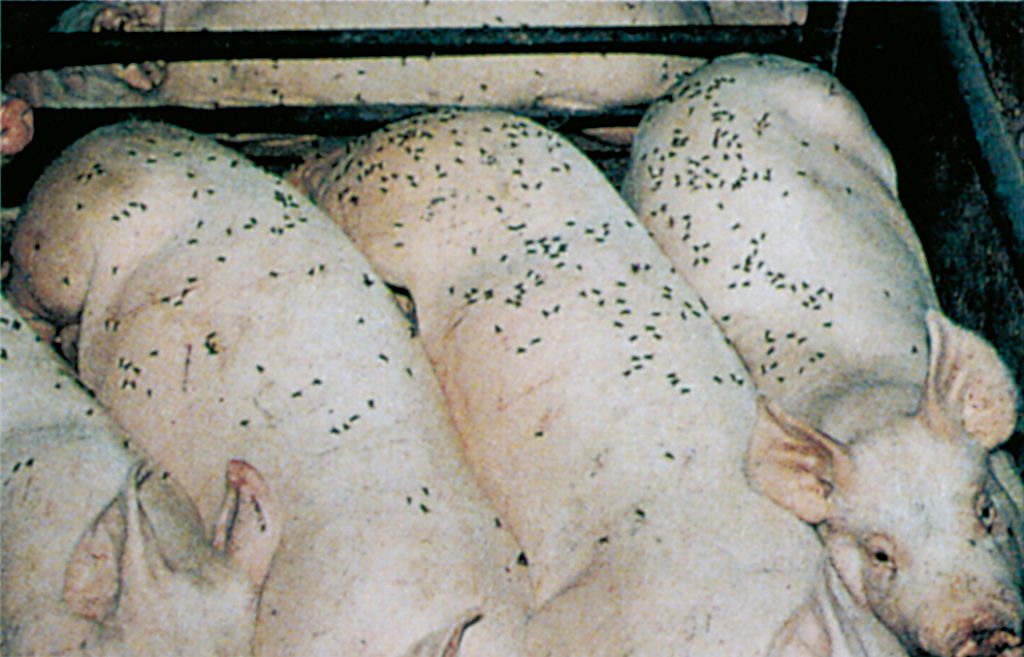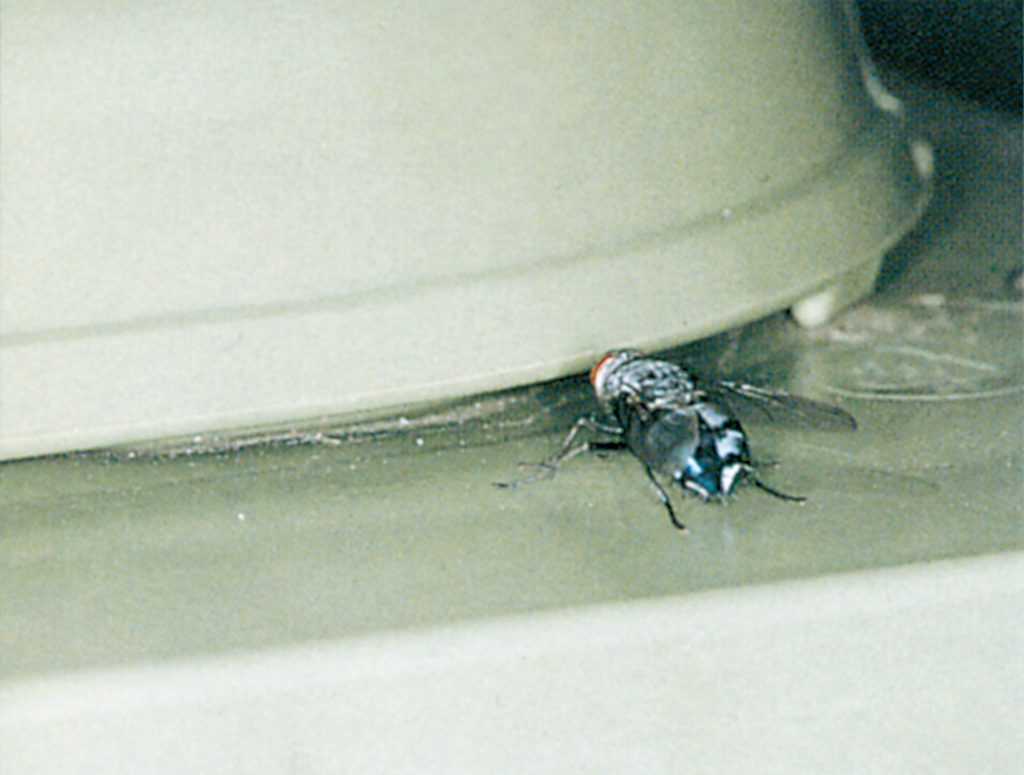
Latin: Calliphoridae

Long ago, before the months were named after Roman emperors, the month we now call July was called worm month in certain parts of northern Europe.
The worms concerned were blowfly larvae or maggots and it reminds us of what a problem it must have been to keep meat fit for human consumption during the summer months.

The blowflies most commonly seen in the house are the large bluebottles, Calliphora erythrocephala and the slightly smaller, iridescent greenbottles such as Lucilia sericata.
Under normal conditions female blowflies lay their eggs on dead animals, the smell of which can attract them from a distance of several kilometres. They also lay on other decomposing organic matter and on faeces.

The eggs hatch in less than a day and the larvae immediately bore straight down into the food.
They grow very rapidly and will be full size in about a week, and they will then normally leave the carrion.
If the larvae have no opportunity to bury themselves in the ground they will crawl around until they find a suitable place in which to pupate.
Blowfly larvae found indoors may come from dead nestling birds, or from dead rats or mice.

A single dead rat will provide food for 4000 maggots.
The creeping larvae may have an unpleasant appearance, but on the other hand they do remove the objectionable smell of a dead rat which is often far worse.
The larvae move away from the light, so they will often pupate behind panelling or under a carpet. After a further 8-10 days the pupae wriggle their way into the light and the adult flies emerge. They are immediately able to fly off, mate and lay eggs.
Like other flies, the various blowflies have been suspected of carrying diseases, and this subject is discussed in more detail on p. 55 – Invertebrates and the spread of disease.
The metabolic products of such flies are themselves very undesirable, and meat that has been tainted by them must be very carefully washed before use.




